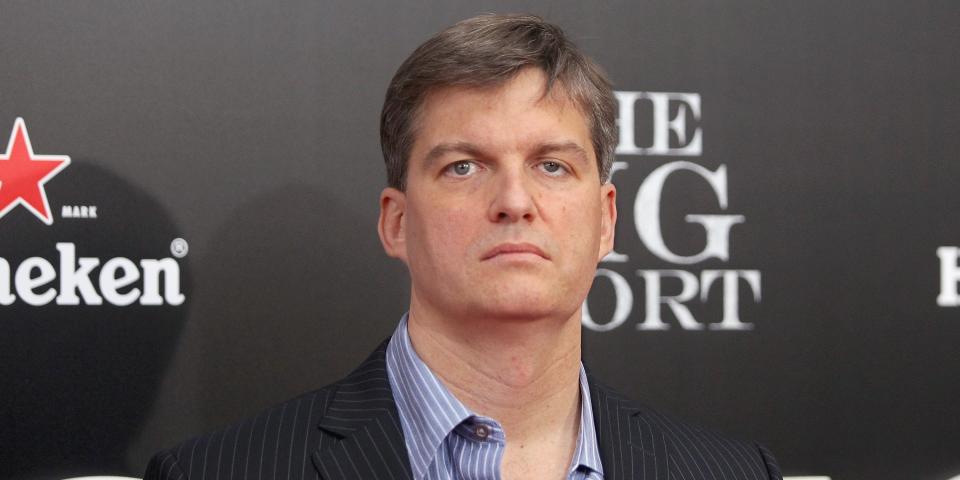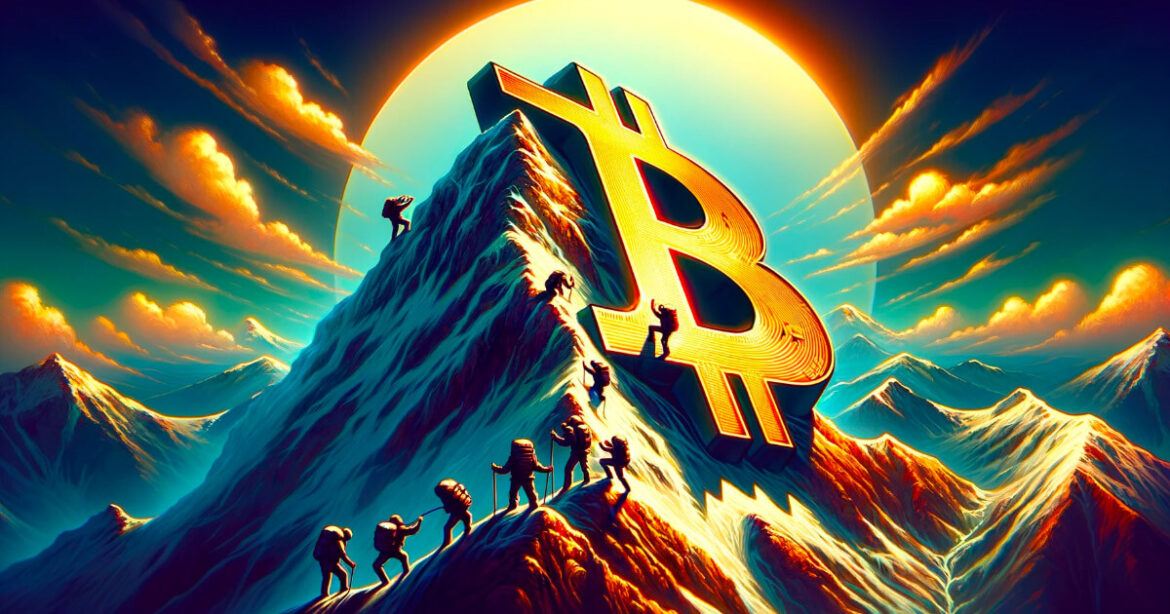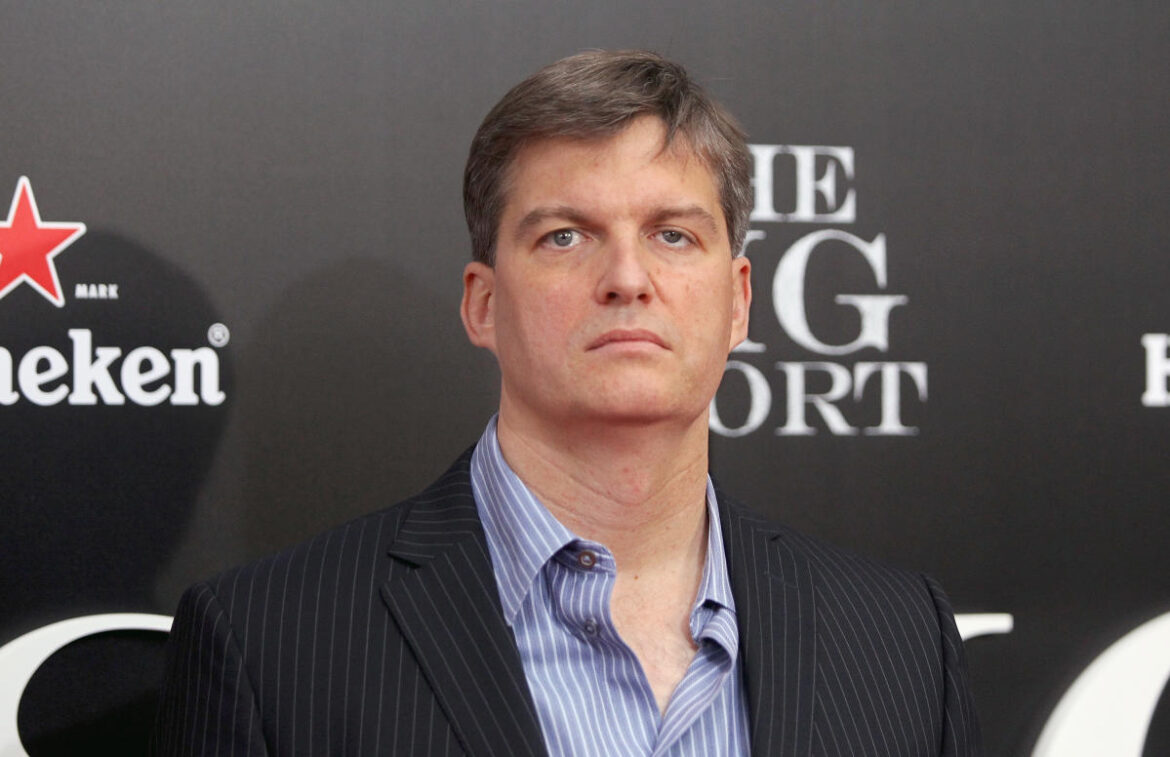 On Tuesday, Proshares introduced two new offerings: the Ultra Bitcoin exchange-traded fund, sporting the ticker BITU, and the Ultrashort Bitcoin exchange-traded fund (ETF), known as SBIT. While BITU is designed to deliver two times the daily returns of bitcoin, SBIT is structured to produce double the inverse of bitcoin’s daily returns. Proshares Introduces Leveraged and […]
On Tuesday, Proshares introduced two new offerings: the Ultra Bitcoin exchange-traded fund, sporting the ticker BITU, and the Ultrashort Bitcoin exchange-traded fund (ETF), known as SBIT. While BITU is designed to deliver two times the daily returns of bitcoin, SBIT is structured to produce double the inverse of bitcoin’s daily returns. Proshares Introduces Leveraged and […]
Source link
Bets
Legendary Investor Stanley Druckenmiller Dumps Big Tech, Bets on AI and Gold
 Stanley Druckenmiller, the legendary investor who was part of George Soros’ Quantum Fund, has dumped traditional tech stocks while putting funds into gold mining companies and artificial intelligence (AI) shares. According to filings, he sold Amazon, Alphabet (Google), and Broadcom stocks while acquiring shares of Barrick Gold and Newmont, two gold miners. Stanley Druckenmiller Sells […]
Stanley Druckenmiller, the legendary investor who was part of George Soros’ Quantum Fund, has dumped traditional tech stocks while putting funds into gold mining companies and artificial intelligence (AI) shares. According to filings, he sold Amazon, Alphabet (Google), and Broadcom stocks while acquiring shares of Barrick Gold and Newmont, two gold miners. Stanley Druckenmiller Sells […]
Source link
Investors hedge bets on Bitcoin with $50K call options before ETF decision
The crypto market is currently charged with tension, anticipating the U.S. Securities and Exchange Commission’s impending decision on the first spot Bitcoin ETF. Amidst divided opinions over whether the SEC will approve the ETF in the coming days or postpone the decision again, a close analysis of Deribit’s Bitcoin options market reveals traders bracing for considerable price movements in January.
As of Jan. 5, the total open interest in Bitcoin options on Deribit is 228,646.70 BTC, representing a notional value of $10.05 billion. This substantial figure indicates a high level of market participation and interest in Bitcoin’s future price movements.
The dominance of call open interest, comprising 162,694.50 BTC compared to put open interest at 65,952.20 BTC, suggests a bullish sentiment among investors. They appear to be anticipating or hedging against a potential increase in Bitcoin’s price.
The breakdown of open interest by strike price further reinforces this bullish sentiment. The highest concentration of call options is at the $50,000 strike price, with a value of $1.05 billion. This level could be viewed as a significant psychological and financial threshold that many investors are betting Bitcoin will reach or surpass. The next highest concentration is at the $45,000 and $60,000 strike prices, indicating optimism for even higher prices, though with lesser conviction than for the $50,000 mark.

Regarding open interest by expiration, the data shows a heavy concentration of call options for the Jan. 26 expiration, with $2.21 billion in calls versus $988.49 million in puts. This suggests that the bullish sentiment is more pronounced for the medium term, with a large part of the market anticipating significant developments surrounding the Bitcoin ETF to occur before this date.

The regular trade breakdown, showing almost equal percentages of puts and calls bought and sold —17.8% and 17.9% for puts, 32.1% and 32.2% for calls, respectively — indicates a balanced market in terms of trading activities. The data shows that a higher percentage of market participants are engaged in call option transactions compared to puts. This indicates a stronger interest in betting on or hedging against an increase in Bitcoin’s price. The balance between calls bought and sold is also nearly equal, suggesting that for every investor speculating on a price rise (by buying calls), there is almost an equal number of investors (or perhaps the same investors in different transactions) who are either more cautious or looking to profit from selling these options.

Data from Deribit reflects a predominantly bullish sentiment, with investors showing a strong belief in the potential for Bitcoin’s price to increase, particularly towards the $50,000 level in the short to medium term. However, a substantial amount of put options and balanced trade activities indicate a cautious approach among traders, with many preparing for further volatility.

Blockstream CEO Adam Back said on social media that he believes Bitcoin (BTC) will likely hit $100,000 before its next halving, causing a blend of excitement and skepticism within the cryptocurrency community.
Back also believes that Bitcoin could potentially reach between $750,000 to $1 million per token under a bullish scenario. While some enthusiasts align with Back’s bullish outlook, others criticize what they see as speculative guessing in an unpredictable market.
$100K BTC
The conversation began with a tweet from Bitcoin analyst and author Vijay Boyapati, asking if Bitcoin could hit an all-time high (ATH) before the halving. Back boldly responded with an affirmative, saying:
“That’s what I’ve been saying, my bet is $100k before the halving.”
Back’s prediction goes against the flagship crypto’s historic price trend, which has never broken above a previous cycle’s all-time high before the halving. In the past two cycles, BTC price began its breakout movements months after the halving as supply and demand settled at new levels.
Bitcoin’s current all-time high is roughly $69,000, and many believe that a monumental move above the previous high is unlikely.
However, some in the community argue that the next bull run will entail vast amounts of institutional money as spot exchange-traded funds (ETFs) related to Bitcoin finally secure regulatory approval in the U.S.
One X (formerly Twitter) user pointed out that the most recent bear cycle took BTC below its previous all-time high — something that had also been unprecedented until last year.
Many community members echoed Back’s sentiment of a bull run magnitudes greater than any that have come before due to factors like institutional investors and the mainstream acceptance of Bitcoin. Additionally, the flagship crypto enjoys a regulatory status akin to commodities like gold, even in the U.S., where watchdogs have been cracking down on the industry.
Optimistic speculation
While Back’s predictions align with optimistic market sentiments and the historical tendency for Bitcoin to surge post-halving, some community members are wary — calling the prediction optimistic speculation at best.
Critics of his statement pointed out the inherent uncertainty of cryptocurrency markets, emphasizing that even expert opinions should be taken with caution. They argued that making high-stakes predictions can be misleading, especially for less experienced investors who might interpret them as guarantees.
Meanwhile, some argued that the unprecedented move would not be a positive one, with some making parodical claims of Bitcoin falling to $3,000 in the coming years.
The debate reflects the broader dichotomy within the cryptocurrency community: a clash between cautious realism and optimistic speculation. As the halving nears, these divergent views underscore the unpredictable nature of the market.
Whether Bitcoin reaches the $100k mark pre-halving as Back predicts remains to be seen, but the discussion it has spurred is a testament to the dynamic and ever-evolving narrative of Bitcoin and the wider cryptocurrency landscape.
Surge in bullish bets could help push stocks higher as $2.4 trillion in options set to expire Friday.
Traders have piled into call options linked to popular U.S. equity exchange-traded funds as U.S. stocks rallied following the release of Tuesday’s consumer-price index.
That could help push stocks even higher in the days ahead, options-market strategists said.
Options tied to $2.4 trillion in stocks, exchange-traded funds and equity indexes are set to expire on Friday, according to data compiled by Rocky Fishman, founder of Asym50, a provider of analytics about the U.S. options market.

ASYM50
A chart from a team of analysts at Goldman Sachs Group showed that call buying tied to popular index-tracking exchange-traded funds exploded this week, causing the ratio of outstanding calls to puts tied to the SPDR S&P 500 ETF Trust
SPY,
the Invesco QQQ ETF
QQQ
and the iShares Russell 2000 ETF
IWM
to sink as traders dumped puts and piled into calls. This ratio is typically referred to as “skew” in Wall Street parlance.

GOLDMAN SACHS
Notably, skew for calls tied to the IWM, the ETF tracking the Russell 2000, a popular index of small-cap stocks, has sunk to its lowest level on record, according to Goldman’s data, signaling unbridled bullishness in a previously unloved corner of the marke.t
Brent Kochuba, founder of SpotGamma, a provider of options-market data and analytics, told MarketWatch that the shift in small-cap skew has been “super interesting.”
See: Options traders are piling into bullish bets on small-cap stocks at a record pace
With roughly one-third of calls tied to the IWM set to expire on Friday, some of the momentum that has driven small caps sharply higher over the past two weeks could fade if traders opt not to roll over their positions.
But the spike in demand could also be a sign that more traders will pile into small caps in the hopes that they will continue to climb, as corners of the U.S. market that have lagged Big Tech all year continue to play catch up.
Call options represent bullish bets on an underlying security or index. Put options represent the opposite. Options can be used to speculate on market direction, or to hedge an investor’s portfolio.
Investor Michael Burry of ‘Big Short’ fame has closed bets against S&P 500, Nasdaq
Michael Burry, who famously shorted subprime mortgages during the 2008 financial crisis, closed his bets against the S&P 500 and the Nasdaq 100 in the third quarter.
But he also found another industry to short: semiconductors.

Burry’s hedge fund Scion Capital disclosed Tuesday in a federal filing with the SEC that it had closed out “put” positions on the SPDR S&P 500 ETF (SPY) and Invesco QQQ Trust (QQQ), which tracks the Nasdaq 100 index, as of the end of September.
Those bearish bets amounted to more than $1.6 billion as of the last trading day of the second quarter. The indexes fell 3.6% and 3%, respectively, during the third quarter.
Burry gained fame for his moves during the 2008 crisis, a severe downturn that began with a US housing bust. Burry predicted a collapse in residential real estate prices as early as 2007 and then shorted a number of subprime deals through the use of credit default swaps.
He became a central figure in Michael Lewis’s 2010 book “The Big Short,” and Christian Bale later portrayed Burry in a 2015 film adaptation of the Lewis book.
Scion Capital broadly shrank its exposure to the stock market in the third quarter, according to its new SEC filing, selling 76% of the stocks it disclosed at the end of the second quarter.
But Scion reopened positions in JD.com and China-tech giant Alibaba (BABA) after selling out of the companies in the second quarter.
The hedge fund also eliminated its remaining exposure to regional lender New York Community Bank (NYCB). In the first quarter, Scion spent more than $23 million betting on financial stocks during a chaotic period marked by several prominent bank failures.
Burry, however, isn’t finished shorting stocks.
Scion opened two new positions, one shorting 100,000 shares of BlackRock’s semiconductor ETF, the iShares Semiconductor ETF (SOXX), and another 2,500 shares betting against online travel website Booking Holdings Inc. (BKNG).
The firm also purchased 1,500 shares of Booking Holdings Inc. outright.
Click here for the latest stock market news and in-depth analysis, including events that move stocks
Read the latest financial and business news from Yahoo Finance

-
“Big Short” investor Michael Burry’s bearish stock bets earlier are paying off.
-
In the second quarter, his management fund Scion held put options on ETFs that track the S&P 500 and Nasdaq.
-
Since then, the S&P 500 has fallen about 8%, and the Nasdaq has tumbled 9%.
Michael Burry’s bearish equity bets earlier this year have proven correct as the S&P 500 and Nasdaq have sold off sharply.
His spot-on bets against subprime mortgages were portrayed in “The Big Short” and earned him a massive investor following.
On Friday, the S&P 500 entered correction territory, joining the Nasdaq after it made a similar move earlier this week.
By the end of the second quarter, his management fund Scion held put options on two exchange-traded funds — SPDR S&P 500 and Invesco QQQ — that track the major index funds.
Since then, the S&P 500 has fallen about 8%, and the Nasdaq has tumbled 9%.
Burry regularly rings the alarm on stocks. In recent years, the Scion chief has warned of a massive bubble, and once suggested that the S&P 500 would bottom out at around 1,900 points.
But he recently admitted to making a mistake this year. In late January, Burry tweeted the word “sell,” ahead of a bull-market run.
Correction: October 27, 2023 — An earlier version of this story was based on tweets that aren’t affiliated with Burry and references to them have been removed.
Read the original article on Business Insider
Sign up for insightful business news.
There’s no ‘A’ or ‘I’ in hype.
Of the 229 fledgling companies in the latest batch of startups to earn backing from famed accelerator Y Combinator, 138 are self-billed as working in artificial intelligence or machine learning.
Who, What, Where, When, and Y
Twice a year, Y Combinator brings a new class of baby companies into its fold, offering funding and guidance. And twice a year, onlookers and analysts get to see which types of companies are driving the current zeitgeist and guess which firms could join famed alumni like Airbnb and Stripe.
The ChatGPT bump is already being felt in the program — a reflection of much wider investor interest in getting in on AI’S ground floor:
- Compared to recent classes, this summer’s 138 AI startups is a massive increase. In the winter cohort earlier this year, just 59 firms identified as AI-driven, and last summer’s class included just 22 AI firms.
- About one-fifth of total global startup funding in July and August went toward AI companies, according to Crunchbase. In fact, it’s just about the only sector generating interest; in the first six months of 2023, venture capital firms closed just 4,300 deals at a total of about $65 billion, or a nearly 50% year-over-year dip in deal value and a 35% dip in deal volume.
Early-Seeded Resentment: YC says more than 24,000 startups applied to its latest class, which comes with standardized terms of a $500,000 investment — $125,000 at a 7% stake, plus $375,000 upfront that will eventually translate into equity at the most favorable terms given to an investor in the next round of funding. This summer’s final selections are almost remarkably premature, with three-quarters of them having yet to generate any revenue, and more than 80% having never raised cash before. However, YC’s venture-capital peers aren’t too happy that YC is setting baseline terms for the entire market, according to a recent Axios report, claiming that it incentivizes founders to seek unreasonably high valuations in their next round of funding. As if the tech startup world hasn’t always had that problem.
What’s worth streaming in September 2023? Here are your best bets amid slim pickings.
Looking to spend your entertainment dollars wisely in September? Watch Hulu and read a book or two.
That pretty much sums up a hugely underwhelming lineup from streaming services, which burned through their best shows in the spring and have little to offer for the start of the traditional fall TV season. That’s not to say there aren’t a handful of promising shows — there are — but is one decent new show per service worth the price of multiple monthly subscriptions? Almost certainly not.
It’s unclear if the dearth of new shows can be blamed on the Hollywood strikes (streamers boasted that they had many months of shows stockpiled and said viewers wouldn’t notice a dropoff until 2024), but the timing is more than a little odd, especially considering how viewers will likely be looking for alternatives to network TV’s barren, strike-impacted fall schedule.
The good news is that consumers can save some money by cutting back, because in the coming month, you really don’t need more than one or two subscriptions.
Each month, this column offers tips on how to maximize your streaming and your budget, rating the major services as a “play,” “pause” or “stop” — similar to investment analysts’ traditional ratings of buy, hold or sell. We also pick the best shows to help you make your monthly decisions.
Consumers can take full advantage of cord-cutting with a churn-and-return strategy — adding and dropping streaming services each month. All it takes is good planning. Keep in mind that a billing cycle starts when you sign up, not necessarily at the beginning of the month, and keep an eye out for lower-priced tiers, limited-time discounts, free trials and cost-saving bundles. There are a lot of offers out there, but the deals don’t last forever.
Here’s a look at what’s coming to the various streaming services in September 2023, and what’s really worth the monthly subscription fee.
Hulu ($7.99 a month with ads, or $14.99 with no ads)
Hulu’s September lineup remains solid, but mostly because of August carryovers.
The big addition is Season 2 of FX’s “Welcome to Wrexham” (Sept 13), the critically acclaimed, hit docuseries about a lower-division Welsh soccer team’s strive toward promotion. Of course, it helps that the team is owned by Hollywood actors Ryan Reynolds and Rob McElhenny, who have significantly raised the team’s profile and, most importantly, boosted its coffers. Season 1 was fantastically entertaining, if at times self-serving, and while Wrexham perhaps shouldn’t be called underdogs anymore, Season 2 should provide plenty more feel-good vibes. You don’t have to love sports to love this story. Note that new eps will stream a day after they air on cable’s FX.
Hulu’s already ramping up with creepy programming ahead of Halloween, with “The Other Black Girl” (Sept. 13), a “Get Out”-like sinister-workplace thriller starring Sinclair Daniel and based on Zakiya Dalila Harris’ novel; “American Horror Story: Delicate, Part 1” (Sept. 21), starring Emma Roberts, Kim Kardashian and Cara Delevigne in a story about an actress whose pregnancy takes a horrifying turn; and “No One Will Save You” (Sept. 22), a horror movie starring Kaitlyn Dever as an anxiety-ridden woman whose home is invaded by aliens.
More: Here’s what’s new on Hulu in September 2023 — and what’s leaving
There’s also ABC’s “The Golden Bachelor” (Sept. 29), featuring a 71-year-old widower seeking his soulmate, and new episodes every week of the breezily entertaining “Only Murders in the Building,” the final seasons of “Archer” and “Breeders” (series finale Sept. 25), and the brilliant, sublime “Reservation Dogs” (series finale Sept. 27). Also worth a watch: the terrifically tense eco-terrorism movie “How to Blow Up a Pipeline,” which arrived in late August, and new movie additions such as “The Menu” (Sept. 3), “The Banshees of Inisherin” (Sept. 4) and “Mad Max: Fury Road” (Sept. 15).
Who’s Hulu for? TV lovers. There’s a deep library for those who want older TV series and next-day streaming of many current network and cable shows.
Play, pause or stop? Play. Even in a month with few premieres, Hulu is head and shoulders above the rest. But be warned, Disney is jacking up the price of ad-free Hulu to $17.99 in October.
Amazon’s Prime Video ($14.99 a month)
In fairness, it’s a relatively blockbuster month for Amazon’s
AMZN,
Prime Video.
After a two-year layoff, Season 2 of the sprawling fantasy epic “The Wheel of Time” (Sept. 1) picks up with Moraine (Rosamund Pike) and Rand (Josha Stradowski) now scattered and forced to regroup as the Dark One turns out to be far from defeated. Season 1 was one of Prime’s most-watched series ever, and Season 2 will reportedly be darker and more action-packed, spanning the second and third books of Robert Jordan’s series.
The end of the month will bring the premiere of “Gen V” (Sept. 27), set in “The Boys” universe and following a group of students with extraordinary abilities at a prestigious — and extremely competitive — college for superheroes-to-be. It looks every bit as depraved and violent as the massively popular “The Boys,” and fans of that show should dig it. For others, it may test your tolerance for exploding heads.
And see: Here’s everything coming to Amazon’s Prime Video in September 2023
Prime’s also got the nightmare-vacation thriller “Wilderness” (Sept. 15), the astrological dating show “Written in the Stars” (Sept. 15), and an impressive number of movie additions — about four times as many as were added in August. Highlights include “2001: A Space Odyssey,” “Children of Men,” “Face/Off” and the original “Bad News Bears.”
Don’t forget the return of NFL Thursday Night Football, with some quality matchups: Eagles-Vikings (Sept. 14), 49ers-N.Y. Giants (Sept. 21) and Lions-Packers (Sept. 28).
Who’s Prime Video for? Movie lovers, TV-series fans who value quality over quantity.
Play, pause or stop? Pause and think it over. “The Wheel of Time” and “Gen V” should be two of Prime’s most popular series this year and there’s a good slate of NFL games. But if you’re not a big fan of fantasy, excessively violent superheroes or football, the lineup suddenly looks lacking.
Netflix ($6.99 a month for basic with ads, $15.49 standard with no ads, $19.99 premium with no ads)
It’s an unusually slow month for Netflix
NFLX,
but there is one highlight: the fourth and final season of the excellent British high-school dramedy “Sex Education” (Sept. 21). Asa Butterfield, Ncuti Gatwa, Emma Mackey and Gillian Anderson return as the raunchy yet sweet coming-of-age story shifts the students to a new, ultra-progressive school, where they’ll try to fit in amid new challenges.
There’s also the fifth and final season of Matt Groening’s animated fantasy series “Disenchantment” (Sept. 1); the final season of the British crime drama “Top Boy” (Sept. 7); Season 5 of the romantic drama “Virgin River” (Sept. 7); Season 5 of the reality dating show “Love Is Blind” (Sept. 22); Wes Anderson’s short film “The Wonderful Story of Henry Sugar” (Sept. 27), based on a Roald Dahl short story; and the Chilean horror satire “El Conde” (Sept. 15), which asks if dictator Augusto Pinochet was actually a vampire.
For more: Here’s everything coming to Netflix in September 2023, and what’s leaving
Also, the epic WWII miniseries “Band of Brothers” and its sequel, “The Pacific” (both Sept. 15), join Netflix as part of HBO’s new licensing deal that includes “Ballers” and “Insecure.”
Who’s Netflix for? Fans of buzz-worthy original shows and movies.
Play, pause or stop? Pause. Taken together, “Sex Education” and “Band of Brothers” are almost worth the subscription price alone, but beyond that…
Apple TV+ ($6.99 a month)
“The Morning Show” (Sept. 13) returns for its third season, as Apple
AAPL,
basically keeps trying to make “fetch” happen. The newsroom-set, wannabe-prestige drama is not good, a narrative mess that borders on ridiculous. On the other hand, it’s fairly popular, thanks to one of the most impressive, and expensive, casts on TV (which adds Jon Hamm, Tig Notaro and Natalie Morales this season), and it’s probably hard to say no to Reese Witherspoon and Jennifer Aniston. So instead of flirting with cancelation, the sunk costs will continue for a company that can definitely afford it.
Meanwhile, Apple also has “The Changeling” (Sept. 8), a horror series billed as a “fairytale for grown-ups,” starring LaKeith Stanfield as a new father whose wife mysteriously goes missing after giving birth, and tracks his nightmarish journey to find her; “Still Up” (Sept. 22), a British comedy series about romantic insomniacs; and “Flora and Son” (Sept. 29), a musical/family drama movie from writer/director John Carney (“Once,” “Sing Street”) and starring Joseph Gordon-Levitt and Eva Hewson.
There are also new eps every week of “Invasion,” “Physical” (series finale Sept. 29), “Foundation” (season finale Sept. 15) and “The Afterparty” (season finale Sept. 6).
Who’s Apple TV+ for? It offers a little something for everyone, but not necessarily enough for anyone — although it’s getting there.
Play, pause or stop? Stop. Apple’s had a great year, but there’s a pretty steep dropoff once “The Afterparty” ends.
Max ($9.99 a month with ads, or $15.99 with no ads)
Curiously and concerningly, Max — formerly HBO Max — has more AMC shows coming in September than it does HBO originals.
Max recently announced a partnership with AMC+ that will see seven AMC series — “Fear the Walking Dead”, “Anne Rice’s Interview with the Vampire,” “Dark Winds,” “Gangs of London,” “Ride with Norman Reedus,” “A Discovery of Witches” and “Killing Eve” — stream on Max for two months starting Sept. 1. It’s a good lineup too, with “Interview with the Vampire,” “Dark Winds,” “Gangs of London” and the first season of “Killing Eve,” in particular, worth checking out. The shows will be available for all tiers, and will be ad-free.
Later in the month, Warner Bros. Discovery
WBD,
will finally integrate Max and CNN, after scuttling CNN+ last year soon after its launch. CNN Max will launch Sept. 27, on all Max tiers, offering live news and original programming. It’s not a live feed of cable’s CNN, but it may be close enough to satisfy cord-cutters.
Aside from that, there’s the animated comedy “Young Love” (Sept. 21), about a tight-knit Black family in Chicago, and based on Matthew A. Cherry’s acclaimed animated short “Hair Love”; Season 3 of the British romantic comedy “Starstruck” (Sept. 28); and “The Venture Bros.: Radiant Is the Blood of the Baboon Heart” (Sept. 2), a movie that wraps up the hilariously twisted Adult Swim series.
Also: What’s coming to Max in September 2023
The one saving grace for Max this month is new episodes of some very good returning shows, such as “How to with John Wilson” (season finale Sept. 1), “Harley Quinn” (season finale Sept. 14) and “Winning Time” (season finale Sept. 17).
Who’s Max for? HBO fans and movie lovers. And now, unscripted TV fans too, with a slew of Discovery shows.
Play, pause or stop? Stop. What a dramatic shift from spring’s monster lineup. Once “Winning Time” ends, there’s little to justify the cost.
Disney+ ($7.99 a month with ads, $10.99 with no ads)
It’s a dismal month for Disney+.
The forgettable live-action version of “The Little Mermaid” (Sept. 6) makes its streaming debut, and “I Am Groot” (Sept. 6) — the animated “Guardians of the Galaxy” spinoff — returns for its second season of shorts, along with a handful of “behind-the-scenes” Marvel and “Star Wars” specials.
Meanwhile, the “Star Wars” series “Ahsoka” has new episodes every week. While it’s entertaining enough for those who are caught up with the four-season animated “Star Wars: Rebels” — it’s essentially Season 5 of “Rebels” — newcomers may find themselves a bit lost.
Who’s Disney+ for? Families with kids, hardcore “Star Wars” and Marvel fans. For people not in those groups, Disney’s
DIS,
library can be lacking.
Play, pause or stop? Stop. The price of ad-free Disney+ is rising significantly in October, so it’s time to start thinking about whether you really need to subscribe. This month, you really don’t.
Peacock (Premium for $5.99 a month with ads, or $11.99 a month with no ads)
Peacock’s big addition this month is “The Continental: From the World of John Wick” (Sept. 15), a prequel miniseries about the origins of the hotel for assassins from the “John Wick” universe. It’s a rich premise, but the producers managed to blow any goodwill by inexplicably giving a starring role to Mel Gibson, despite his long and ugly history of racist, misogynistic, homophobic and antisemitic comments. This was a conscious choice on their part. And you, the consumer, have a choice too. So no. Just … no.
There’s also the streaming debut of the drive-fast-and-blow-things-up blockbuster movie “Fast X” (Sept. 15); “The Irrational” (Sept. 26), a silly-looking new NBC procedural starring Jesse L. Martin as a behavioral scientist who uses his expertise to help The Man, aka governments, law enforcement and corporations; and a ton of Halloween-themed movies, from “The Birds” to “Ghostbusters” to “Halloween” to “Saw.”
Things look better on the live-sports side. Big Ten college football returns Sept. 2, and NFL football starts Sept. 7. Sundays feature an MLB game of the week, and there’s a full slate of English Premier League soccer, motorsports and golf, including the Ryder Cup (Sept. 29-Oct. 2).
Who’s Peacock for? Live sports and next-day shows from Comcast’s
CMCSA,
NBCUniversal are the main draw, but there’s a good library of shows and movies.
Play, pause or stop? Stop. The live-sports offerings are the only lure.
Paramount+ ($5.99 a month with ads, $11.99 a month with Showtime and no ads)
It’s a weak lineup for Paramount+ as well, with new seasons of realty-competition standbys “Survivor” and “The Amazing Race” (both Sept. 27) the biggest highlights. There’s also the summer-camp-activities competition “The Buddy Games” (Sept. 14); the British comedy “Dreaming Whilst Black” (Sept. 8); the British heist thriller “The Gold” (Sept. 17); Season 4 of the animated “Star Trek: Lower Decks” (Sept. 7); and the season finale of “Special Ops: Lioness” (Sept. 3).
Sports-wise, Paramount has a bunch of college football (Big Ten starts Sept. 2, SEC starts Sept. 16), NFL football every Sunday starting Sept. 10, and a slew of European soccer.
Who’s Paramount+ for? Gen X cord-cutters who miss live sports and familiar Paramount Global
PARA,
broadcast and cable shows.
Play, pause or stop? Stop. Even with football back, there’s just not enough there.
Text size

Lowe’s enjoys steady results and has kept lifting its dividend.
Jeenah Moon/Bloomberg
In uncertain economic times, certainty has a welcome spot in investor portfolios.
But even within value names, some are more recession-proof than others. One strategy is to look at companies that have recently been able to grow their dividends. Increasing payouts at a time when other companies fear that cash is scarce is surely a sign of confidence. Even better would be to stick with so-called “dividend aristocrats,” or companies that have been able to raise their dividends for 25 consecutive years.
While the economy—and market—have proved to be resilient this year in the face of recession worries, many on Wall Street still fear that danger lurks around the corner. Interest rates are likely to stay higher for longer, many on The Street concluded following Federal Reserve Chair Jerome Powell’s speech at Jackson Hole last week. That’s eventually going to put pressure on growth-oriented stocks, presumably making value-oriented names more attractive.
“This cohort of stocks has outperformed heading into and out of recessions historically,” Chris Senyek, chief investment strategist at Wolfe Research, wrote Thursday. As a group, dividend aristocrats yield 2.5.%—not a super-exciting yield when short-term Treasury bills yield more than 5% but still a secure spot. The dividend aristocrats’ price-to-earnings ratio relative to the S&P 500 is roughly 0.95x, slightly below 10-year average of 1.03x, implying that the stocks look cheap.
Within the S&P 500 there are 67 dividend aristocrats with nearly half of the names coming from the industrial and consumer staples sectors. Investors who hope to narrow down that list may want to look at companies that are dividend aristocrats that have also bought back shares in each of the last 10 consecutive years—basically doubling down on returning capital to shareholders.
Senyek identified 13 companies that meet the mark on this metric: Lowe’s (ticker:
LOW
),
Genuine Parts
(GPC),
Walmart
(WMT),
Colgate-Palmolive
(CL), Aflac (AFL),
Cardinal Health
(CAH),
Expeditors International of Washington
(EXPD),
C.H. Robinson Worldwide,
(CHRW),
Emerson Electric
(EMR),
A.O. Smith
(AOS),
Illinois Tool Works
(ITW),
W.W. Grainger
,
(GWW), and
Automatic Data Processing
(ADP).
On average these companies have a dividend yield of 2% and a buyback yield over the last 12 months 5%. While the pace of buybacks could change, historical data would imply a total yield of 7%.
That’s something for investors to get excited about.
Write to Carleton English at carleton.english@dowjones.com










